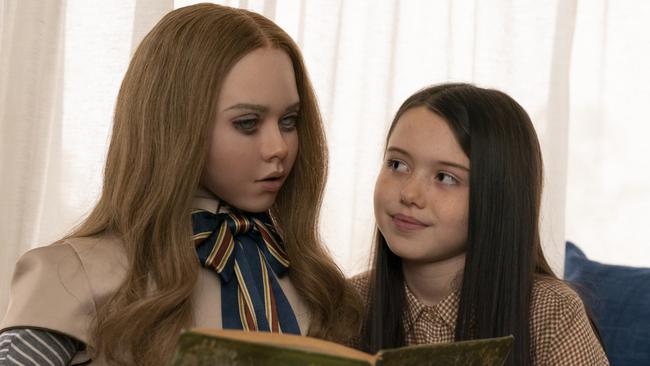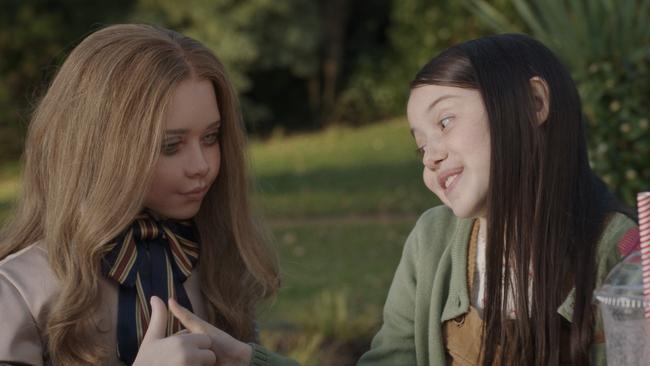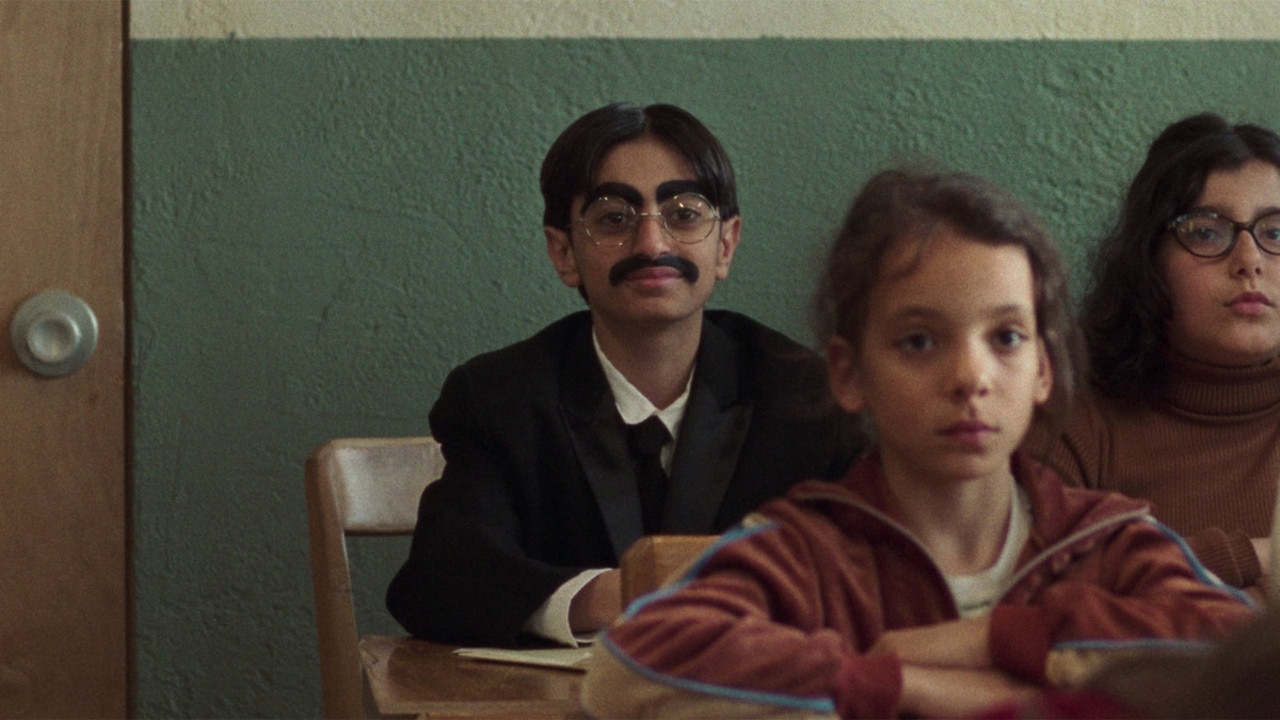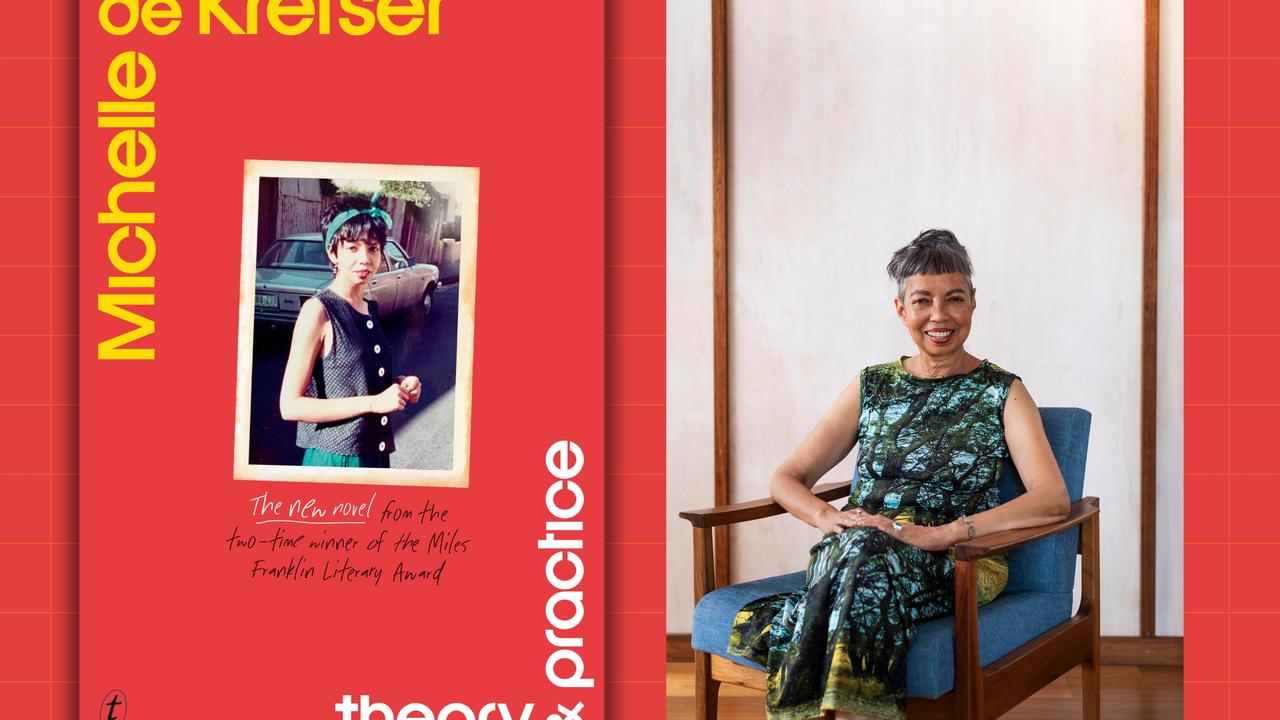Killer doll film you need to see: M3GAN’s box-office bonanza
The comedy-horror M3GAN is the collaboration between two of the modern masters of the macabre: Australian James Wan and the American Jason Blum.

The comedy-horror M3GAN is the collaboration between two of the modern masters of the macabre: Australian James Wan and the American Jason Blum.
At its centre is a digital-age doll, the Model Three Generative Android, aka M3GAN (motion-capture acted by Amie Donald and voiced by Jenna Davis). M3GAN is intended to be the Next Big Thing in artificially intelligent children’s playmates. If she makes it to the shops, the price tag will be $US10,000.
Yet, as tends to happen with AI, there are humans with intentions and robots with plans of their own. There’s a hint of this when M3GAN is being tested in the lab.
Asked to look happy, she half-smiles. Asked to look sad, she half-frowns. Asked to look confused, she, as one of the technicians puts it, “looks demented”. If only they had listened to him.
The threat of a killer doll is not new. There’s the murderous Chucky from the Child’s Play franchise, for starters. Wan, too, has flicked this particular switch, with his 2014 movie Annabel.
Nor is there anything new in the idea of AI going overboard. Way back in 1968 we met the independently minded HAL in Stanley Kubrick’s 2001: A Space Odyssey. In 2021, Kazuo Ishiguro published Klara and the Sun, a novel with which M3GAN shares similarities.
It’s directed by New Zealand filmmaker Gerard Johnstone, who Wan approached after liking his 2014 debut Housebound, and written by American scriptwriter Akela Cooper, who wrote Wan’s 2021 movie Malignant.
So what is new about this film? In the horror movie sense, not a lot, but that dependability is partly why the genre works. There have been 13 Halloween movies for which no director has felt the need to reinvent the face mask or chef’s knife.
In the AI Might Be A Problem sense, there’s an incremental move forward in the exploration of children’s intensifying relationship with the technological world.
M3GAN, still in the prototype phase, leaves the lab because her creator, Gemma (Allsion Williams), has unexpected custody of her nine-year-old niece, Cady (Violet McGraw). She essentially uses her niece as a guinea pig. It works, at first. However it’s not long before M3GAN and Cady bond to the point where adults become irritating obstructions. This is where the movie asks interesting questions. If children form their main emotional bonds with robots, will they become robots themselves?
“I get so crazy without M3GAN,’’ Cady tells Gemma. Yet it’s not only the children who rely on artificial assistance.
When the unattached Gemma walks in her front door with her nine-year-old niece, her digital assistant tells her she has six unanswered voice messages and “five Tinder notifications”.
M3GAN does have a mind of her own. She thinks beyond her programming. That’s something we want children to do.
What she does not have are emotions such as compassion, kindness, sympathy, empathy, remorse or guilt. When Gemma confronts her for doing something lethal, her response is priceless: “Big whoop!”

I described this 102-minute movie as comedy-horror and I think that’s how most people will see it: more laughs than jump scares.
The scares are diminished for two reasons. First, the filmmakers wanted a PG-13 rating in the US. That was a smart move, financially, as the movie blitzed the box office on its opening weekend stateside.
Second, anyone over the age of 13 will take one look at M3GAN — her overlarge pale blue eyes looking where they should not look, her creepy Mona Lisa smile — and know there’s a mad, bad robot on the loose.
This knowledge makes the movie all the more enjoyable.
The ending is predictable, as it is on a roller coaster, but it’s a thrilling ride all the same. For Wan’s Atomic Monster Productions and Blumhouse Productions it may be the beginning of a beautiful friendship.
-
The Gothic crime thriller The Pale Blue Eye, based on Louis Bayard’s 2003 novel of the same name, hopes to take an acorn of fact and grow it into a formidable oak.
It falls short of that ambition but let’s start with the positives. The kernel of truth is that the American writer Edgar Allen Poe was a cadet at West Point, the US military academy in upstate New York. He is played with delightful flamboyance by Harry Melling, best known as Dudley Dursley in the Harry Potter movies.
He looks like Poe and is the star of this show, which is no small compliment given his co-stars include Christian Bale, Gillian Anderson, Timothy Spall, Toby Jones and the great Robert Duvall.
It is the winter of 1830 and 21-year-old Poe has published a few poems here and there. He is far from becoming the writer he will be.
That’s the beginning and the end of the biographical launch pad. Everything else in this movie is made up. It is written and directed by American filmmaker Scott Cooper, whose previous films include Crazy Heart (2009), for which Jeff Bridges received an Oscar nomination.
When a cadet’s body is found hanging from a tree, the West Point commanders (Spall and Simon McBurney) summon the famous private detective Augustus Landor (Bale).
He arrives with his own ghosts. He is widowed and his teenage daughter is missing. The commanders politely mention the cases he has cracked, but what they emphasise is that there is to be no drinking on the job: “Your reputation precedes you.”
The case of the dead cadet continues in the morgue. His heart is secretly removed, perhaps by someone with surgical skill. The whispers start. Occultists. Satanists. Black magic.
The West Point doctor (Jones), his wife (Anderson) and their two adult children (Lucy Boynton and Harry Lawtey) “all look like they are guilty of something”.
Landor asks Poe to assist him. Poe has an immediate thought: “To remove a man’s heart is to traffic in sin and who better equipped for such labour than a poet.”
When Landor points out Poe is a poet, the young man is emphatic is his agreement. There are other amusing literary jokes. A raven turns its grave and stern eye to the camera. Poe disses James Fenimore Cooper. The title is a line from Poe’s well-known short story The Tell-Tale Heart.
The first hour of this 130-minute movie captures the imagination. The winter landscape is hauntingly shot by Japanese cinematographer Masa Takayanagi, who has worked with the director before, as has Bale.
After this tight set-up, it loses its way.
When Duvall pops up as a scholar of the dark arts, it is time to start worrying. And rightly so, as some of what follows is B-grade horror movie material.
It’s interesting to think about why a film goes wrong. I don’t know the answer on this one. It feels like the script, after that first hour, was done on the run.
It’s made by a good director, has a fine cast, a compelling plot and an intriguing historical link to Poe’s fascination with death. Such elements make it worth watching, even if it does become predictable and silly by the end.




To join the conversation, please log in. Don't have an account? Register
Join the conversation, you are commenting as Logout